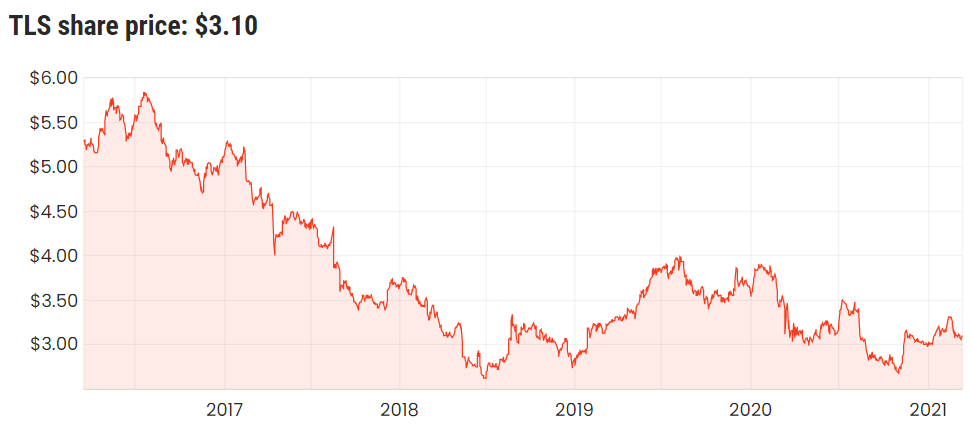The Telstra Corporation Ltd (ASX: TLS) share price has been dropped recently, does that make it an obvious buy?
What’s going on with the Telstra share price?
Over the last month the Telstra share price has actually dropped by around 7%. That’s a sizeable drop considering economic conditions are generally getting better in Australia.
It’s important to remember that lower share prices don’t necessarily mean things are better value to buy. But, it’s better to buy something when its price is lower rather than more expensive.
Telstra shares have been struggling for years – it’s lower than it was a year ago and even five years ago.

The giant telecommunications business has done a fine job of growing its number of mobile users and plans. During the FY21 first half, the telco managed to attract 80,000 postpaid handheld mobile services. Telstra also added 46,000 prepaid handheld users and more than 163,000 wholesale mobile services across prepaid, postpaid and the ‘internet of things’ services.
But the more important statistic is revenue. Telstra’s mobile revenue declined during the latest result, due to lower hardware sales and the impact on international roaming earnings from COVID-19. Broadband profit has also been falling due to the negative impacts of the NBN on the business.
The telco used to own the network and generate high profit margins – but all of that revenue is going to the NBN now, so Telstra isn’t able to make much revenue any more. Any telco can compete with Telstra on a similar footing because they’re all third party NBN sellers. There’s a lot of competition in the telecommunications space, with businesses like TPG Telecom Ltd (ASX: TPG) (which includes Vodafone), Optus (which includes Amaysim), Aussie Broadband Ltd (ASX: ABB) and plenty of smaller ones.
Telstra hasn’t managed to stop the profit decline, despite the high level of cost cutting in recent years.
Underlying EBITDA (EBITDA explained) fell by 14.2% to $3.3 billion. The main two causes of this drop were the NBN hit of $370 million and an estimated $170 million impact from COVID-19 effects. Excluding both of these, underlying EBITDA was broadly flat compared to the first half of FY20. Net profit fell 2.2% to $1.1 billion.
What could send the Telstra share price higher?
Telstra’s goal is to start growing its underlying EBITDA again. The mobile part of the telco industry may actually start to see margins rise sooner rather than later because of a couple of big deals. Optus bought the mobile business of Amaysim Australia Ltd (ASX: AYS), whilst TPG and Vodafone merged. These deals could mean that there’s less focus on lowering prices.
Slightly higher margins would be very helpful for profit considering how large Telstra’s customer base is.
Telstra is continuing to extend its lead with 5G compared to the competition. The TPG – Vodafone merger took a lot of time to get approved, so TPG is on the back foot. Telstra has the chance to win market share with the new technology. However, I’m not sure there’s anything compelling about 5G yet to make phone users want to upgrade their phones to 5G ones in large numbers. 5G could lead to higher revenue per user, but it may not be as much as some investors were previously hoping. Perhaps future new services will lead to more revenue down the track.
Some brokers are quite optimistic about the Telstra share price, such as Credit Suisse which thinks it could reach $3.85 over the next 12 months.
Does the dividend make a difference?
Telstra continues to pay a dividend of 8 cents per share every six months. This translates to a fully franked dividend yield of 5.1%. That’s not bad, and it could form a large part of the returns in the medium term.
However, until profit can start sustainably going up (not just by cutting costs), I’m not sure that the Telstra share price is a market-beating opportunity for the longer term.






